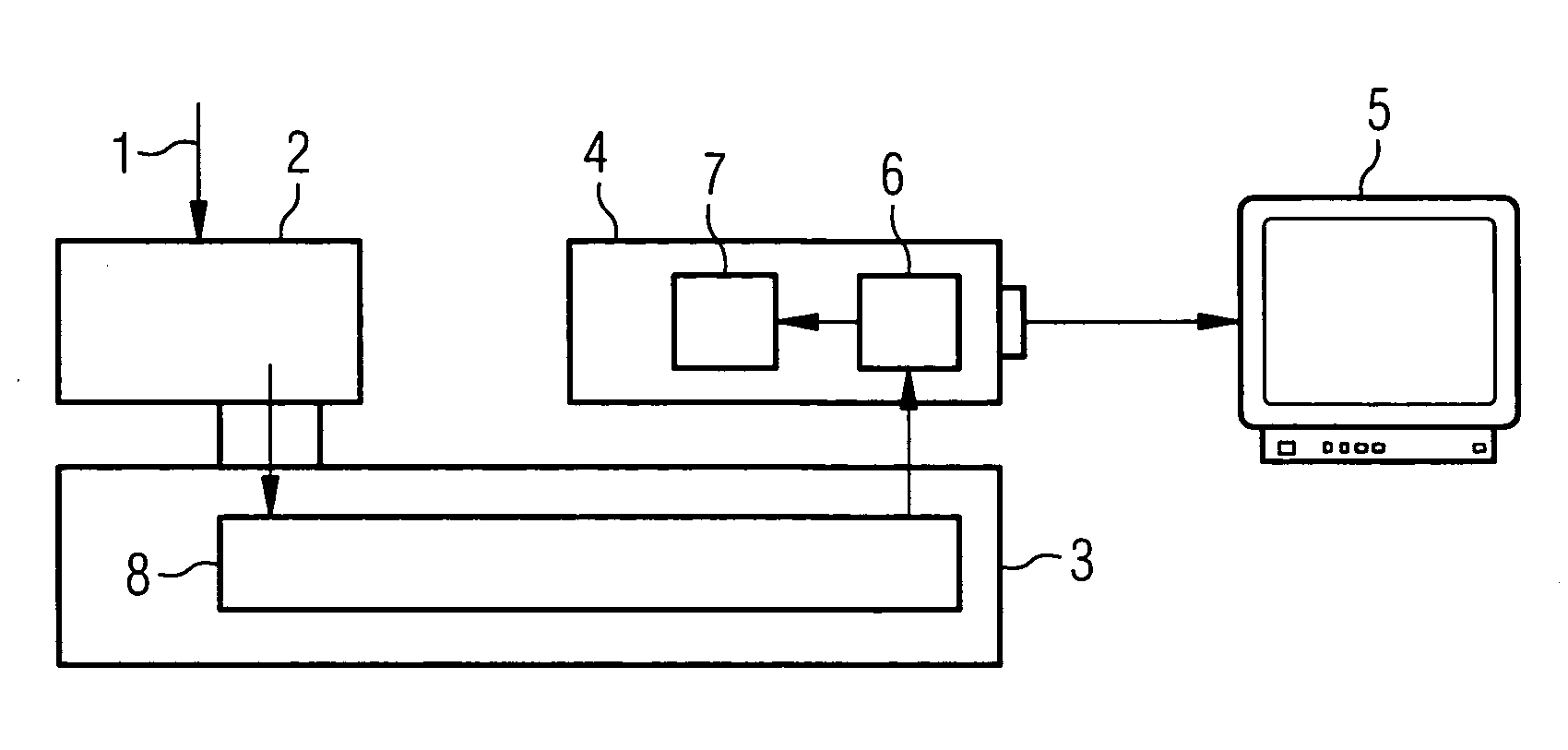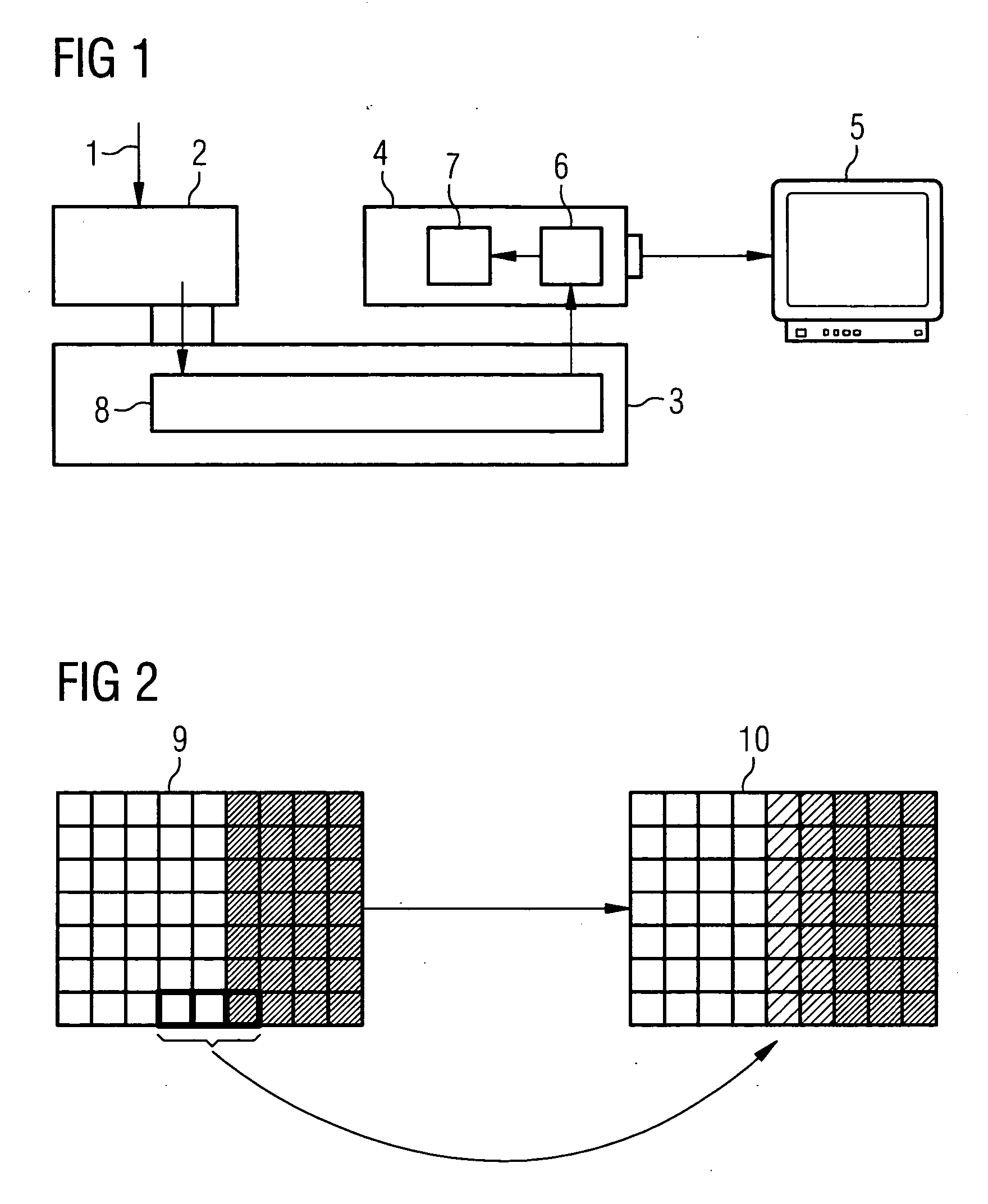Method for the rapid image processing of two-dimensional images
- Summary
- Abstract
- Description
- Claims
- Application Information
AI Technical Summary
Benefits of technology
Problems solved by technology
Method used
Image
Examples
Embodiment Construction
[0019]FIG. 1 shows an example of the data flow in the image computer during implementation of the present method based on x-ray image data. The raw data recorded using the x-ray device 1 is read in by an acquisition card 2 and transferred to the PC 3. A part of the required image processing is subsequently carried out on the master processor of the PC 3, as illustrated by the reference character 8. This image processing on the PC 3 is however not required in all instances, since all image processing can also take place on the graphics card 4, if it has adequate computing capacity.
[0020] With the present method, the image data is first transformed into a three-dimensional representation and subsequently transferred to the vertex shader unit 6 of the modern graphics card 4. One part of image processing takes place in this vertex shader unit 6, after which the image data processed in this manner is once again transformed back into a two-dimensional representation. The data transformed...
PUM
 Login to View More
Login to View More Abstract
Description
Claims
Application Information
 Login to View More
Login to View More - R&D
- Intellectual Property
- Life Sciences
- Materials
- Tech Scout
- Unparalleled Data Quality
- Higher Quality Content
- 60% Fewer Hallucinations
Browse by: Latest US Patents, China's latest patents, Technical Efficacy Thesaurus, Application Domain, Technology Topic, Popular Technical Reports.
© 2025 PatSnap. All rights reserved.Legal|Privacy policy|Modern Slavery Act Transparency Statement|Sitemap|About US| Contact US: help@patsnap.com



